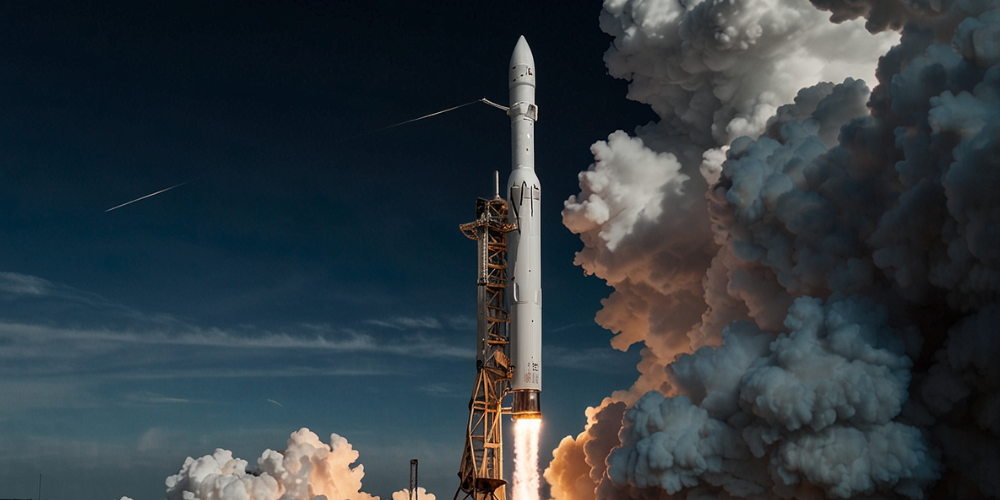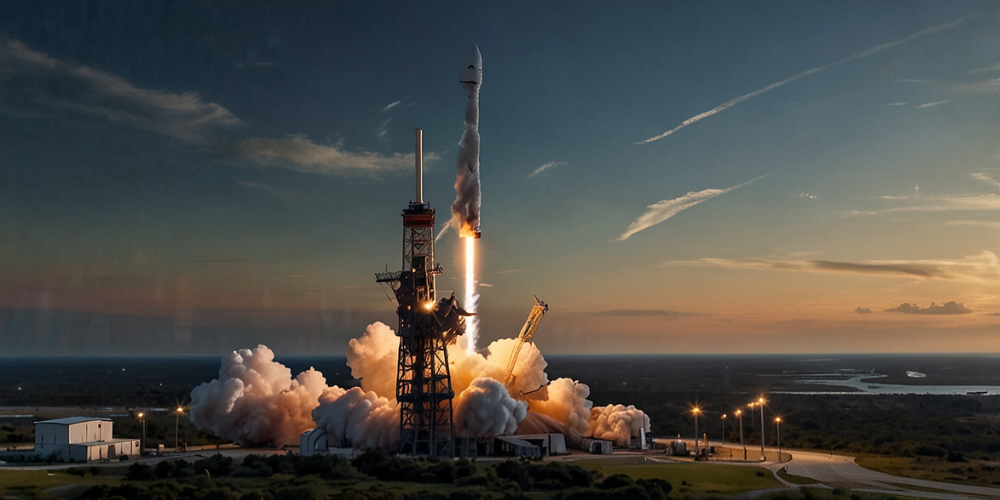Resilience and Innovation: The Falcon 9 Mid-Air Anomaly and SpaceX's Road to Redemption
- 2024-07-25 10:00

On this fateful day nine years ago, SpaceX experienced its first and only mid-air anomaly with the Falcon 9 rocket. The event, which occurred during a NASA mission, saw the rocket disintegrate in mid-flight. This marked a significant moment in SpaceX's history, emphasizing the complexities and challenges of space exploration. Remarkably, despite the mishap, the Dragon spacecraft managed to eject itself from the Falcon 9. Unfortunately, its parachutes failed to deploy due to a software configuration issue. A subsequent NASA investigation identified the use of stainless steel in the spacecraft as a contributing factor. Since then, SpaceX has regained confidence with multiple successful missions under its belt.
The Eventful Day
On June 28, 2015, SpaceX was tasked with flying its seventh cargo mission for NASA under the Commercial Resupply Services (CRS) program. The mission involved the Falcon 9 rocket and the first-generation Dragon spacecraft. The launch took place at 9:21 a.m. Eastern Time, with the initial phases of the flight appearing nominal. As the rocket climbed toward space, SpaceX ground controllers provided regular updates, confirming the achievement of several milestones.
However, just over two minutes into the flight, disaster struck. The rocket was suddenly engulfed in smoke, and debris started scattering. Approximately twelve seconds later, the live broadcast went silent. The only update from a SpaceX presenter was the acknowledgment of some kind of anomaly during the first stage of the flight. He explained that the ignition of the nine Merlin engines and liftoff from the SLC-40 launch pad at Cape Canaveral had gone as planned. The presenter announced that the data would be thoroughly analyzed to determine the cause of the failure.
The Investigation
Initial investigations by SpaceX and NASA quickly shifted focus from the first stage to the second stage of the rocket. SpaceX found that it took less than a second from the first signs of a fault to the complete loss of telemetry. Engineers concluded that the first stage of the Falcon 9 did not cause the explosion; instead, the fault lay within the second stage.
Causative Factors
SpaceX's investigation revealed an "overpressure event" inside the second stage's liquid oxygen tank. The strut that was supposed to handle 10,000 pounds of force failed at just 2,000 pounds, damaging the helium pressurization system within the tank. Such pressure-induced collapses are a perilous aspect of rocket design. The helium pressurization system plays a critical role in maintaining tank pressure as fuel levels deplete. Without sufficient pressure, structural integrity can be compromised.
NASA's Detailed Assessment
NASA's thorough investigation added a layer of complexity to SpaceX's initial findings. The space agency noted that the strut could have broken due to a defect, but other possibilities such as manufacturing damage or improper installation were equally viable. The investigation also revealed that SpaceX had chosen to use an industrial-grade stainless steel part instead of an aerospace-grade component. This decision was made without adequate screening or testing, without following manufacturer recommendations, and without simulating predicted flight conditions.
Lessons Learned
This multifaceted failure underscored the importance of rigorous testing and adherence to recommended guidelines, especially in a highly demanding field such as space travel. SpaceX had taken a risk by opting for a part that was not fully vetted for its role, resulting in catastrophic failure. The lessons learned from this event pushed the company to prioritize quality assurance and adopt more stringent testing procedures.

The Road to Redemption
The failure of the Falcon 9 was a sobering moment for SpaceX, but it was far from the end. The company doubled down on its commitment to innovation and safety, making significant changes to its processes. The Dragon spacecraft has since completed numerous crew and cargo missions to space, undeterred by its past mishaps.
Improvements and Successes
One of the major changes implemented by SpaceX involved the rigorous testing of all components used in their rockets and spacecraft. The use of aerospace-grade materials became non-negotiable, and every part was subjected to stringent screening processes. Simultaneously, SpaceX refined its software to ensure that every aspect, from launch to landing, was optimized for success.
These changes bore fruit quickly. Within months, SpaceX resumed its missions, successfully delivering cargo to the International Space Station and setting new milestones in space exploration. The experience, while a setback, became a pivotal learning moment, reinforcing the need for constant vigilance and innovation in space travel.
Conclusion
Space exploration is fraught with challenges and uncertainties. The June 28, 2015, Falcon 9 rocket failure stands as a stark reminder of these truths. Yet, it is also a testament to human ingenuity and resilience. SpaceX used the lessons learned from its first and only mid-flight anomaly to drive advancements that have since redefined the boundaries of space travel. Today, the company stands as a paragon of success, continually pushing the envelope and inspiring the world to look to the stars once more.





